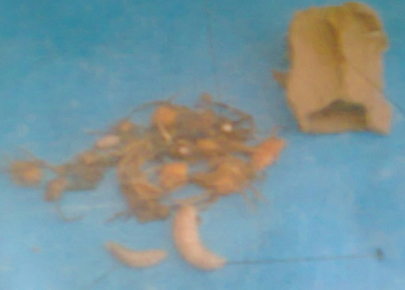Contact: +91-9711224068

FAUNA
- Printed Journal
- Indexed Journal
- Refereed Journal
- Peer Reviewed Journal
Impact Factor (RJIF): 5.69
e-ISSN : 2347-2677, p-ISSN : 2394-0522

Peer Reviewed Journal
International Journal of Fauna and Biological Studies
2014, Vol. 1 Issue 3, Part A
The mechanism of prey capture and mass provisioning by the Nigerian solitary wasp (Sceliphron servillei) (Hymenoptera: Sphecidae).
Author(s):
Ighere EJ., Iloba BN and Ukpowho AR
Abstract:
A study was conducted to investigate the basic physiological factors that tend to guide the Nigerian solitary wasp Sceliphron servillei in its mass provisioning behavior in Sapele, Nigeria. This was done both in captivity and in the wild. In the wild, ten sealed cells were reopened and the immobile spiders counted and measured. To ascertain what prompts the wasp to lay eggs and seal the nest, one of the spiders was pulled out to the entrance of cells that were being provisioned. The carrying capacity of each cell was also determined by measuring the diameters as well as their depth. A cuboid-shaped insect cage; furnished with a dish of wet mud, two potted plants to create a natural environment and a dish of dilute honey to nourish the solitary wasps was used to study the mud-daubers in captivity. Five gravid and active female wasps were caught and released into the cage. Finally orb-web spinning spiders were incrementally released into the cage. The number of spiders per cell bears no correlation with the internal surface areas (ISAs) of the cells (p<0.05) although the ISAs of the cells were significantly the same (p>0.05). Larger spiders were few while smaller ones were many per cell. The wasps were found to seal up the cells (even without laying eggs) with only two spiders when one of them was drawn to the entrance indicating that volumetric capacity of the cell can trigger off the instinct to do so. In captivity, the wasps only began to build nest when the prey population peaked. Large spiders received multiple stings and large dose of venom while opposite is the case with the smaller ones. Spiders that die from overdose during hunting were dropped and not flown to the nest for provisioning.

Fig. 1: Spiders scooped out of the cells belonging to the Nigerian solitary wasp Sceliphron servillei
Pages: 32-36 | 3481 Views 627 Downloads

How to cite this article:
Ighere EJ., Iloba BN and Ukpowho AR. The mechanism of prey capture and mass provisioning by the Nigerian solitary wasp (Sceliphron servillei) (Hymenoptera: Sphecidae).. Int. J. Fauna Biol. Stud. 2014;1(3):32-36.
Important Links
Related Journal Subscription
Allied Journals
Copyright © 2013 - 2025. All Rights Reserved. International Journal of Fauna and Biological Studies






